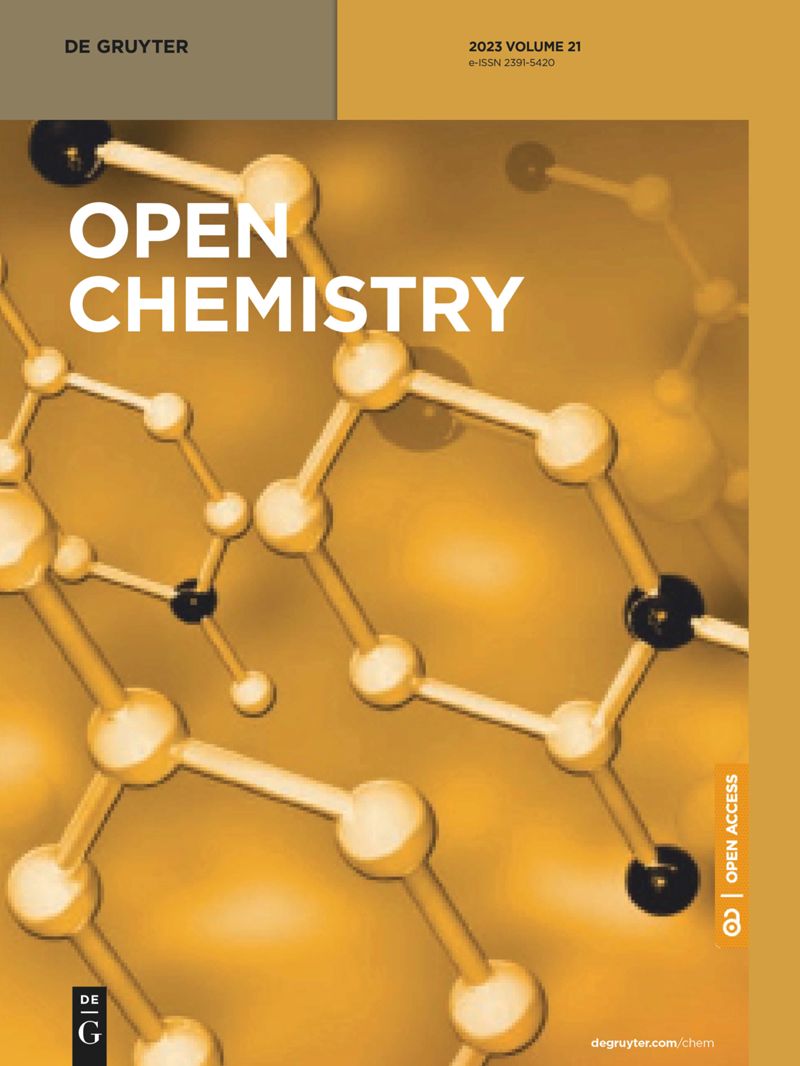Effects of nanoparticles on the activity and resistance genes of anaerobic digestion enzymes in livestock and poultry manure containing the antibiotic tetracycline
IF 1.9
4区 化学
Q3 CHEMISTRY, MULTIDISCIPLINARY
引用次数: 0
Abstract
Taking chicken manure containing antibiotic oxytetracycline (OTC) as the research object, nano-Fe纳米颗粒对含有抗生素四环素的畜禽粪便中厌氧消化酶的活性和抗性基因的影响
以含有抗生素土霉素(OTC)的鸡粪为研究对象,以浓度为 300 mg/kg TS 的纳米氧化铁和浓度为 100 mg/kg TS 的纳米 C60 为载体,进行了为期 55 天的序批式中温厌氧消化实验。分析了厌氧消化过程中的产气性能、化学参数、抗生素含量、酶浓度和抗性基因的变化,以明确纳米颗粒对含抗生素鸡粪厌氧系统的影响,为畜禽粪便的污染减排能力提供可靠依据。结果表明:(1) 添加纳米 Fe2O3 和纳米 C60 能促进不同浓度 OTC 鸡粪的厌氧产气。第 1 至 10 天的累计产气量分别为 2 234(T5)毫升;2 163(T4)毫升;1 445(T2)毫升;1 289(T3)毫升;1 220(T1)毫升;1 216(CK)毫升。T4 和 T5 的累计产气量分别增加了 77.29% 和 83.11%。各组的最终累积产气量分别为 3 712(CK)、3 993(T1)、4 344(T2)、4 447(T3)、4 671(T4)和 4 849(T5)毫升。最终的 OTC 残留浓度分别为 15.25、20.40、56.56、17.67 和 16.89 μg/L,降解率分别为 98.31、98.80、98.29、99.07 和 99.11%;(2)抗生素OTC提高了脱氢酶、淀粉酶、蛋白酶和脲酶的活性,而添加纳米颗粒提高了脱氢酶和淀粉酶的活性,对纤维素酶、脲酶和蛋白酶活性无明显影响;(3)T2、T4和T5组中发现了各种类型的抗生素耐药基因(ARGs),其中多药耐药基因(ARGs)-Multidrug占比较高,分别为33.54%、35.63%、37.43%,其他四种类型MLS、四环素、糖肽、多肽所占比例在8.18%~12.98%之间。
本文章由计算机程序翻译,如有差异,请以英文原文为准。
求助全文
约1分钟内获得全文
求助全文
来源期刊

Open Chemistry
CHEMISTRY, MULTIDISCIPLINARY-
CiteScore
3.80
自引率
4.30%
发文量
90
审稿时长
6 weeks
期刊介绍:
Open Chemistry is a peer-reviewed, open access journal that publishes original research, reviews and short communications in the fields of chemistry in an ongoing way. The central goal is to provide a hub for researchers working across all subjects to present their discoveries, and to be a forum for the discussion of the important issues in the field. The journal is the premier source for cutting edge research in fundamental chemistry and it provides high quality peer review services for its authors across the world. Moreover, it allows for libraries everywhere to avoid subscribing to multiple local publications, and to receive instead all the necessary chemistry research from a single source available to the entire scientific community.
文献相关原料
公司名称
产品信息
阿拉丁
Tetracycline
 求助内容:
求助内容: 应助结果提醒方式:
应助结果提醒方式:


